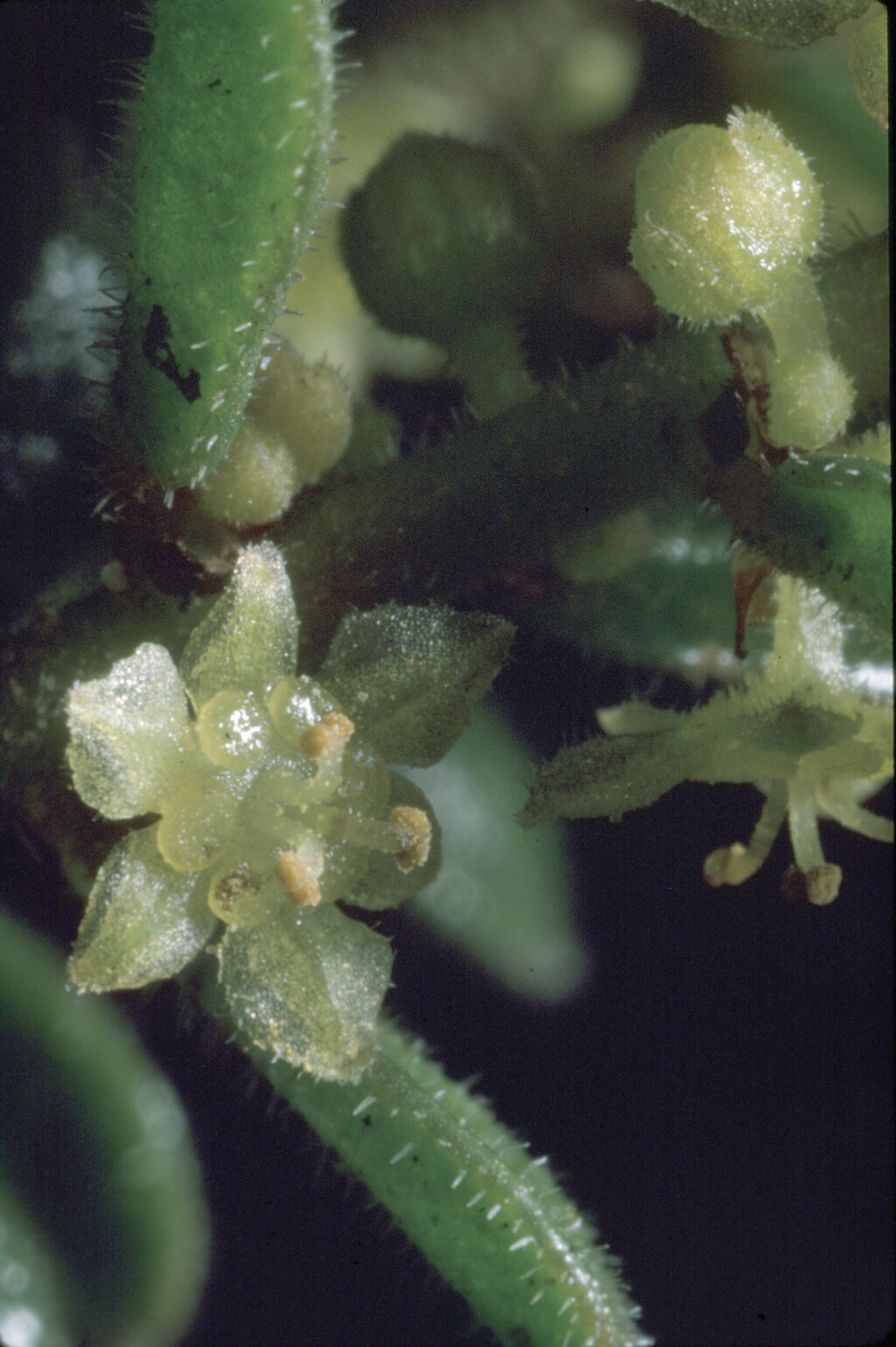Phyllanthus hirtellus
Müll.Arg. Thyme SpurgeDioecious shrub to 50(–120) cm high; branchlets scabrous to hirsute. Leaves obovate to oblanceolate or obcordate, 3–11 mm long, 1.8–6.6 mm wide, acute to emarginate, paler below, scabrous to hirsute along margins and veins, rarely glabrous, margins thickened, usually recurved; stipules c. cordate, to 1.6 mm long, red or black. Male flowers 2–3 per axil, pedicels 0.6–1.8 mm long; sepals 0.7–2.1 mm long, white to yellow, often abaxially hairy; disc 0.9–1.7 mm wide; stamen filaments connate at base, 0.5–1.2 mm long. Female flowers 1–2 per axil; pedicels 0.8–4 mm long; sepals 1.1–3.5 mm long, white, yellow or green; disc 1.3–3.1 mm wide; styles variously divided, to 1.6 mm long. Capsule, transversely ellipsoid, apically depressed, 0.6–3 mm long, 2.4–4.2 mm wide, glabrous to puberulous; seeds yellow-brown to pallid-brown or black, 1.2–2.4 mm long, scalariform. Flowers all year.
Wim, GleP, VVP, GipP, OtP, CVU, GGr, DunT, NIS, EGL, EGU, WPro, HSF, OtR. Also NSW. Locally common (particularly in the east) in dry forest and woodland communities, often on shallow, rocky soils.
Phyllanthus occidentalis is similar to P. hirtellus and occurs within a few km of the Victorian border in New South Wales, but has not yet been found in this State. It can be distinguished from P. hirtellus by having shorter, strongly revolute leaves that have a dense covering of short hairs.
Hunter, J.T.; Bruhl, J.J. (1999). Phyllanthus. In: Walsh, N.G.; Entwisle, T.J., Flora of Victoria Vol. 4, Cornaceae to Asteraceae, pp. 74–78. Inkata Press, Melbourne.
 Spinning
Spinning
